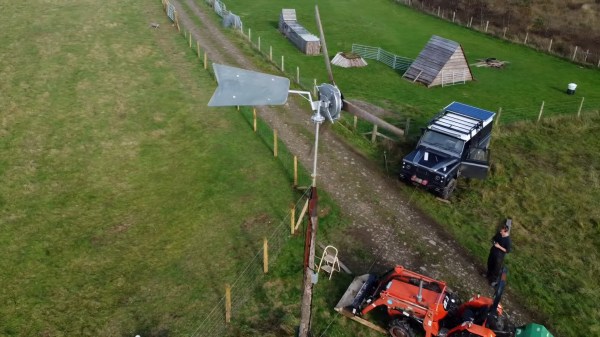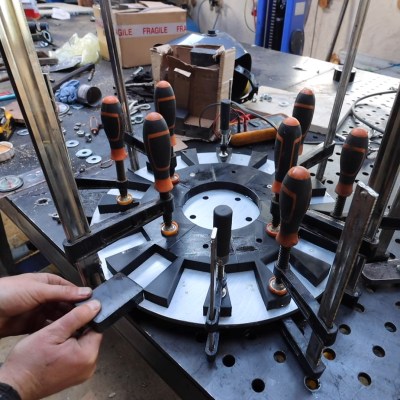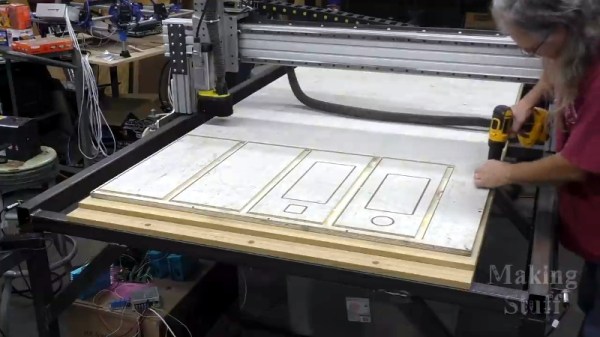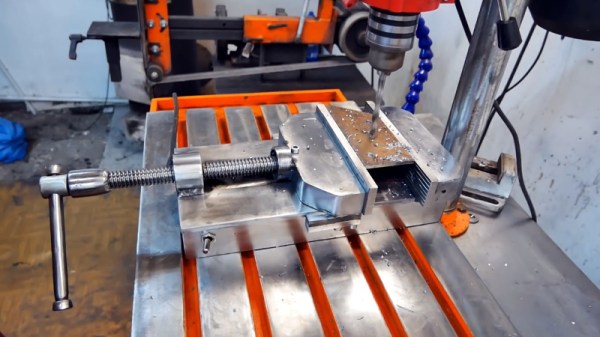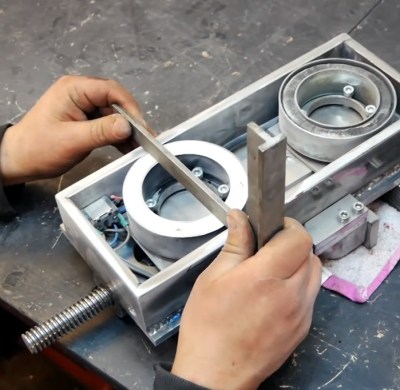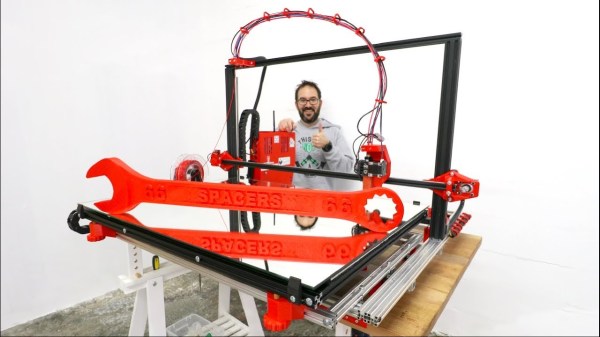Sometimes, you build a thing because you need a thing. Sometimes, you do it just to see if you can. This project is in category two: [polymatt] didn’t need to create a floppy disk from scratch-– plenty of old disks still exist– but we’re glad he made the attempt because it makes for a fascinating video that’s embedded below.
Some of you are going to quibble with the terminology [polymatt] uses in this video: first of all, he didn’t begin by creating the universe, so is he really starting “from scratch”? Secondly, the “floppy” format he’s attempting to copy is a 3½” diskette, which does not flop at all.
Choosing newer stiff-walled medium does allow him to practice his CNC skills and make the coolest-looking floppy enclosure we’ve ever seen. (It turns out brushed aluminum is even cooler-looking than the translucent neon ones.) On the other hand, we can’t help but wonder if a lower-density format 5¼” disk might have been an easier hurdle to jump. The diskette that was built does magnetize, but it can’t read or write actual files. We wonder if the older format might have been more forgiving of grain size and composition of his ferrite coating. Even more forgiving still would be to use these techniques to make magnetic tape which is a perfectly viable way to store data.
Instead of storing data, you could make your own cleaning floppy. It’s not like data storage was really the point here, anyway– its not the destination, but the journey. So whatever you call this DIY diskette, please don’t call it a flop.
Thanks to [Anonymous] for the great tip!



